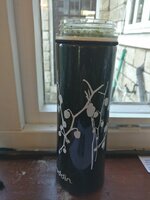Barbara Turner
Member
Hi All
I've got a nano tank that currently got a colony of daphnia for feed my main tank.
I started feeding them with yeast but this leaves a horrible white residue.
With the tank full of daphnia water changes are almost impossible without halving the population..
I was looking at feeding them on Algae.
I put some nettles in the blender and put them in a bottle on the windowsill it's a horrible black colour.
Will this really go green? Have I added way too many nettles?
Does it need a bubbler?
Do I need to seed it with water out my tank?
Will adding anything from my EI starter kit help?

I've got a nano tank that currently got a colony of daphnia for feed my main tank.
I started feeding them with yeast but this leaves a horrible white residue.
With the tank full of daphnia water changes are almost impossible without halving the population..
I was looking at feeding them on Algae.
I put some nettles in the blender and put them in a bottle on the windowsill it's a horrible black colour.
Will this really go green? Have I added way too many nettles?
Does it need a bubbler?
Do I need to seed it with water out my tank?
Will adding anything from my EI starter kit help?



